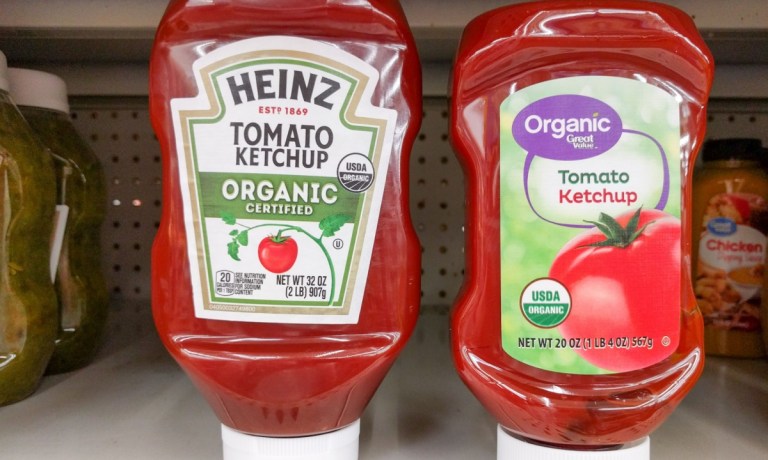
In the ongoing battle for grocery shelf space, consumers are increasingly seeking value. Grocers are eager to meet this demand, while also capitalizing on the higher margins that come from their own private-label brands.
As name brands vie for attention, the stakes are rising, with retailers strategically reconfiguring their aisles to showcase lower-priced alternatives that resonate with budget-conscious shoppers. This shift reflects a broader trend in the grocery landscape, where private labels are not just competing but gaining ground against established brands, reshaping how consumers think about value and quality in their shopping experience.
During this week’s GroceryShop conference in Las Vegas, industry leaders highlighted the significant growth and strategic importance of private-label offerings in capturing market share and responding to evolving consumer demands.
The overarching sentiment at GroceryShop was clear: the private label is not merely a trend but a pivotal element of retail strategy, as companies aim to bolster brand loyalty and adapt to a rapidly changing marketplace.
Ahold Delhaize has set an ambitious goal to increase its U.S. private-label sales by 45%. During a discussion on Monday (Oct. 7), CEO Frans Muller outlined the company’s strategy to achieve this target. He noted that U.S. private-label sales currently account for approximately 30% of total retail sales. Ahold aims to bridge this gap by focusing on the types of products consumers desire, such as sustainable, fresh and personalized options.
“I think the private label and CPG brands on the shelves can also both foster more ambition” in new product development,” Muller said at the conference.
“This private label is very different. It is not the private label of old,” Sherry Frey, vice president of total wellness at consumer research firm NielsenIQ, noted on Monday. “It is premium, it is leaning into sustainability, it is beautiful packaging, it is innovative. So, you’re seeing great innovation here.”
This shift in quality aligns with current consumer behaviors, particularly among younger shoppers. Consider that millennials are most likely to trade down to private labels, according to PYMNTS Intelligence data.
Research indicates that 36% of shoppers are trading down to cheaper alternatives in response to inflation. PYMNTS Intelligence further reveals that grocery shoppers tend to be more loyal to retailers than to specific products, with 53% expressing loyalty to merchants, compared to only 35% who are loyal to products.
Amid the competition for shelf space in America’s grocery stores, private-label brands are seizing a greater share of the spotlight. With supermarkets reducing the number of items they stock and their overall physical space, the impact on traditional food brands is palpable.
“This has put a tremendous amount of stress on shelves,” Steve Zurek, a vice president at Nielsen IQ, told the Wall Street Journal in August.
Dave Marberger, chief financial officer for Conagra Brands, maker of products like Hunt’s ketchup and Healthy Choice frozen meals, told the WSJ: “It’s obviously critical for our business. But there’s no guarantee that you have that shelf space forever. The business has to perform.”
In August, PYMNTS also explored the evolving grocery preferences of consumers in a discussion with Bobby Watts, head of the retail media division at Ahold Delhaize USA.
“They’re not as brand loyal as they used to be,” Watts said, attributing this shift to two key factors. “Economic pressures are causing consumers to make choices … based on price or promotion or value.”
Watts added younger generations, raised in an era of instant gratification, are more inclined to experiment with different brands, while older demographics tend to stick with familiar names.
“They’re willing now to experiment more and test different brands, whereas the other demographics may not be as apt to do so,” he noted, highlighting a significant change in shopping behavior.